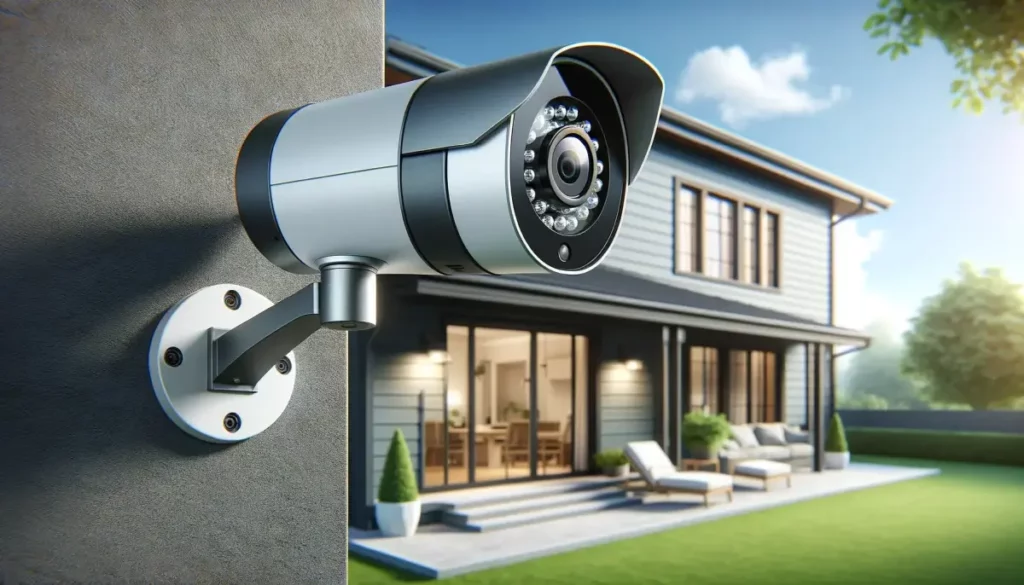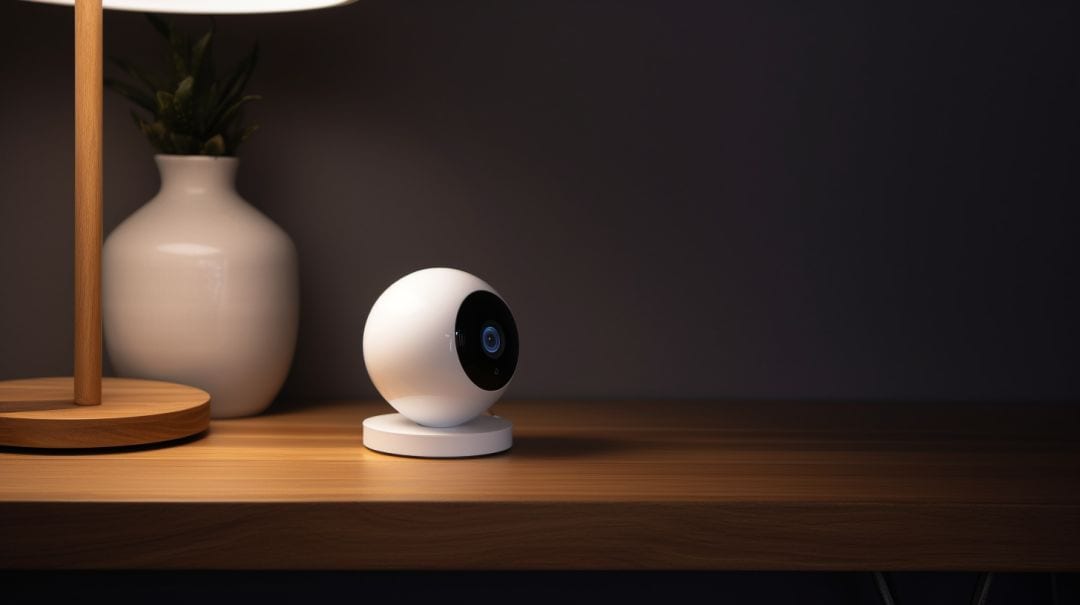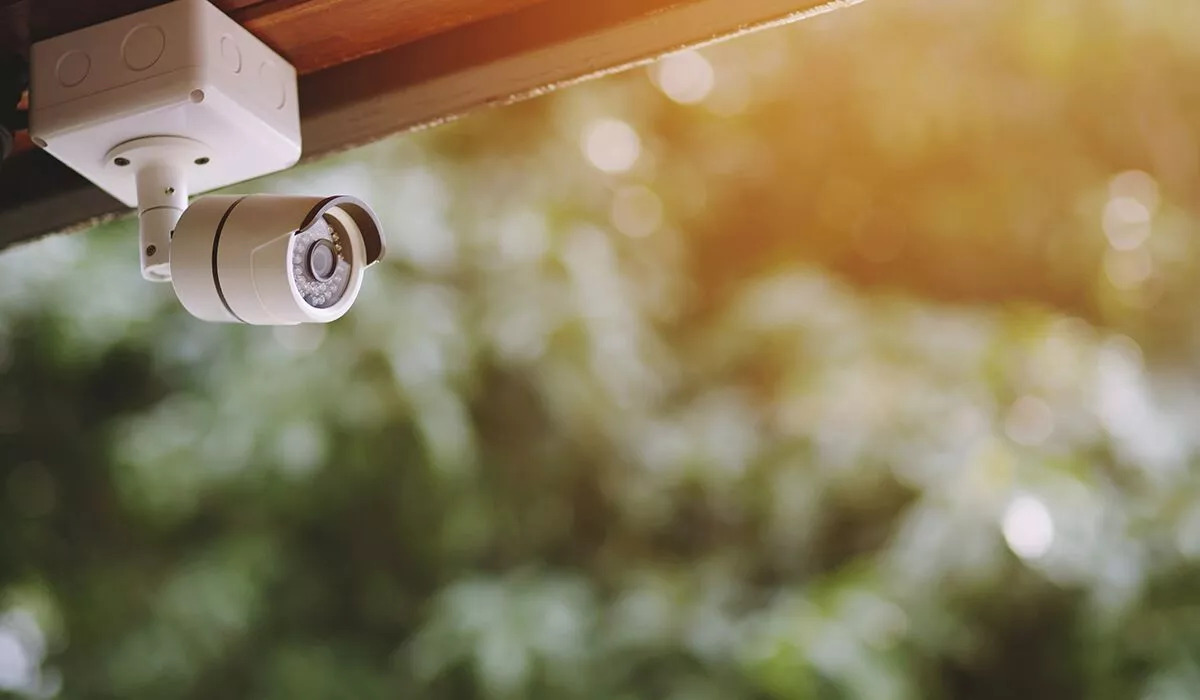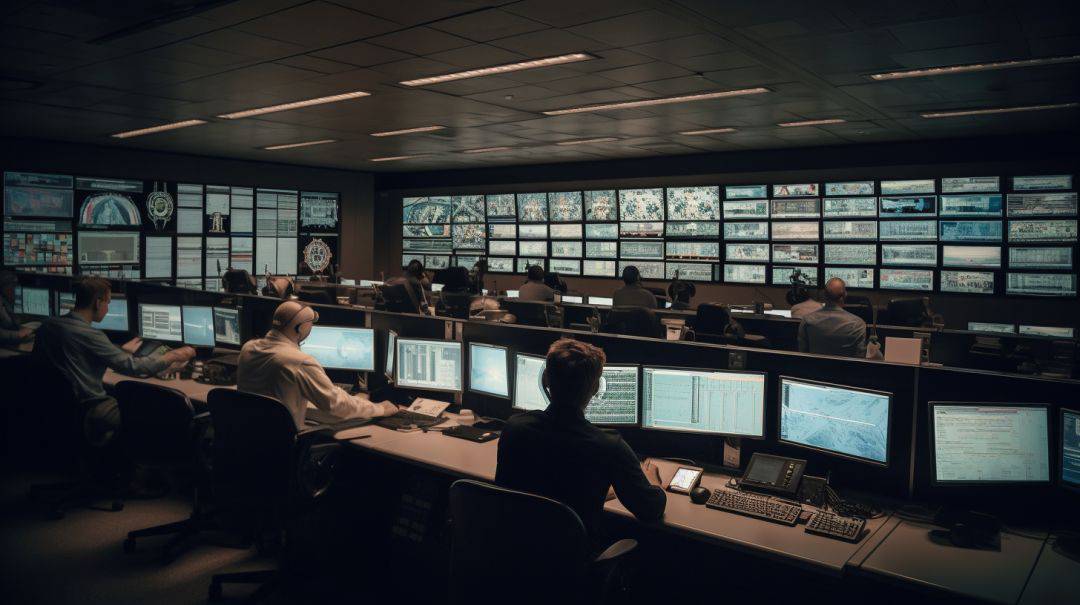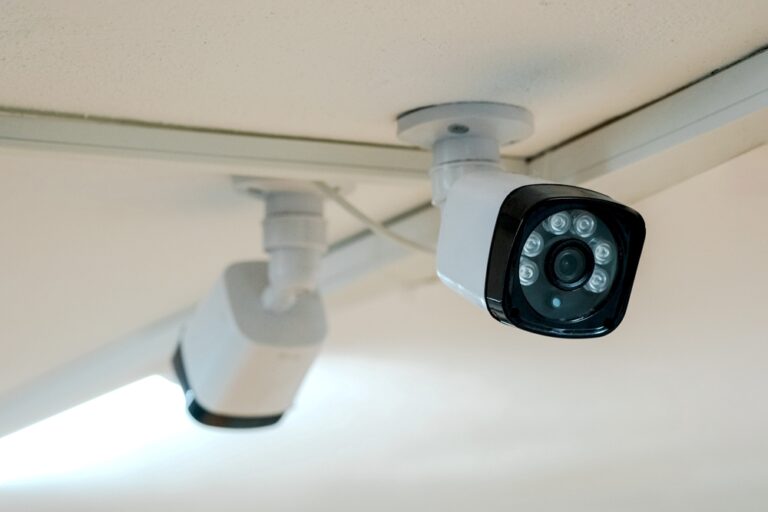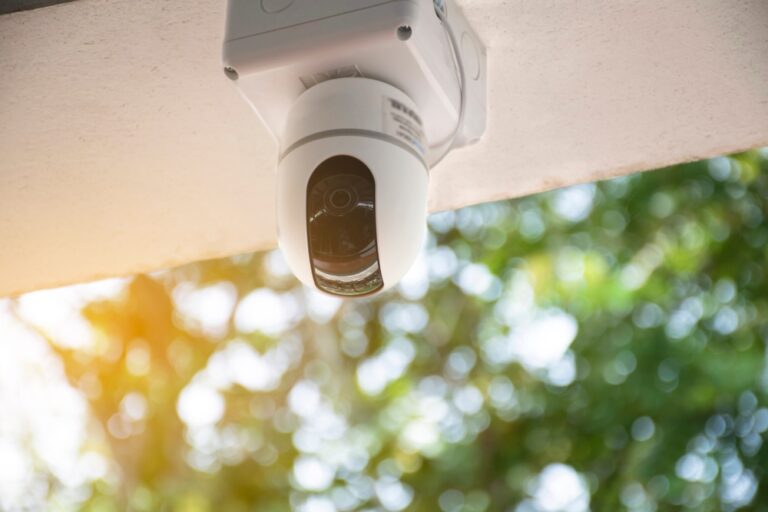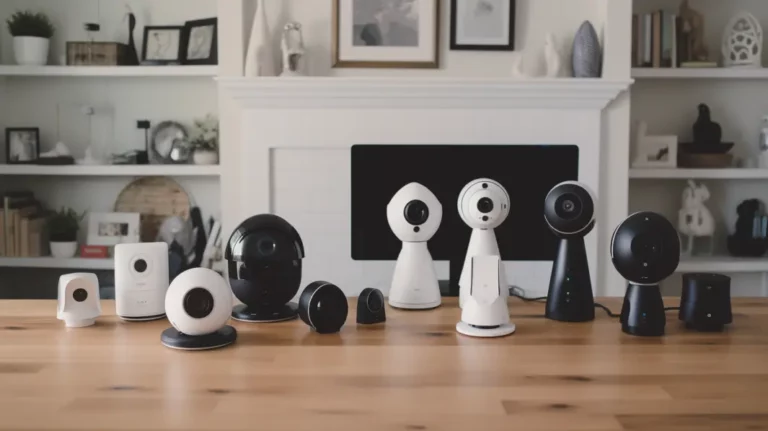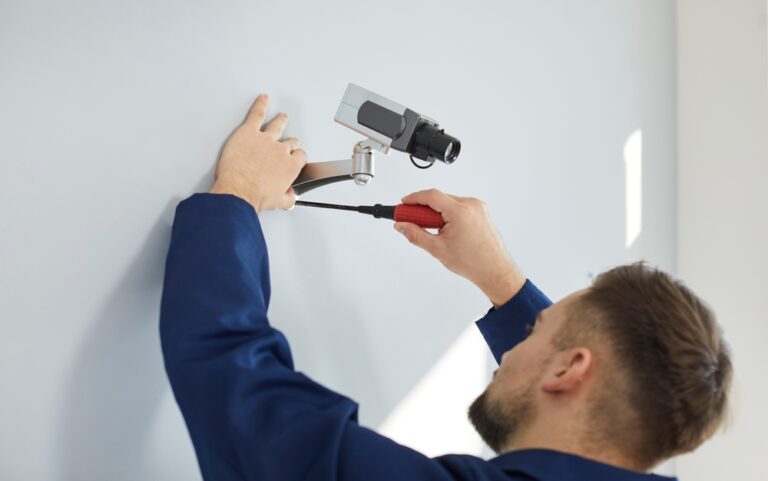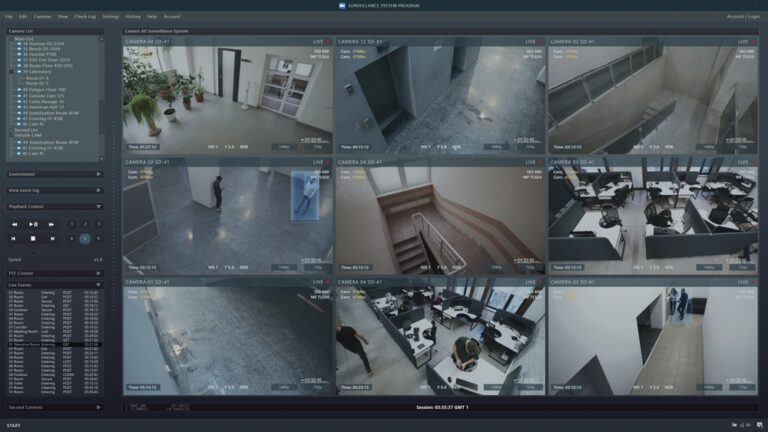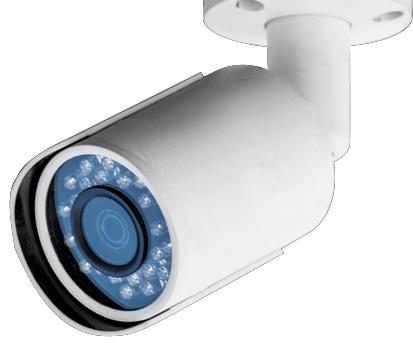- 1) Key Takeaways
- 2) Factors to Consider When Choosing an Outdoor Security Camera
- 3) The Best Outdoor Security Cameras on the Market
- 4) The Importance of Proper Testing
- 5) Home Security Camera FAQs
- 6) Special Features to Consider
- 7) How to Choose the Best Security Camera for Your Home
- 8) How to Use Outdoor Security Cameras Effectively
- 9) Privacy and Security Considerations
- 10) Conclusion
-
11)
FAQs
- 11.1) What video resolution should I look for in an outdoor security camera?
- 11.2) How do I make sure my outdoor camera can withstand the weather where I live?
- 11.3) Should I choose cloud storage or local storage for my security camera footage?
- 11.4) What special camera features improve home security monitoring?
- 11.5) How can I protect my family’s privacy with a home security camera?
Choosing the right outdoor security camera for your home is a smart move to keep your place safe. Think of these cameras as your own eyes that never sleep, always watching over your house. They come in different types with features like super-clear video and ways to see at night.
When picking out a camera, you need to think about how clear the picture will be, where the videos are stored, and if the camera can handle extreme weather. Some are battery-powered so you can put them anywhere while others need wires but stay on all the time.
It’s important that whatever camera you choose has a way to see lots of space and shows things clearly even when it’s dark outside. Knowing what’s happening around your home keeps you informed and ready for anything. Cameras today have cool stuff like detecting movement, talking through them, colorful pictures in low light, and alarms with lights or sounds.
Making sure we give good tips on how to pick and use these cameras means we tested them out ourselves! That way you know which ones do their job best without peeking into places they shouldn’t. Keep reading to learn more about finding the perfect watchful helper for your home!
Key Takeaways
- Look for outdoor security cameras with high video quality, at least 1080p, so you can see details clearly.
- Consider special features like motion detection and two-way talk to improve your home security system.
- Decide between local or cloud storage; remember that cloud storage often has monthly fees.
- Make sure the camera is weather-resistant and fits the climate of where you live.
- Test different brands and models to find one that meets your needs, including how easy it is to set up and use.
Factors to Consider When Choosing an Outdoor Security Camera
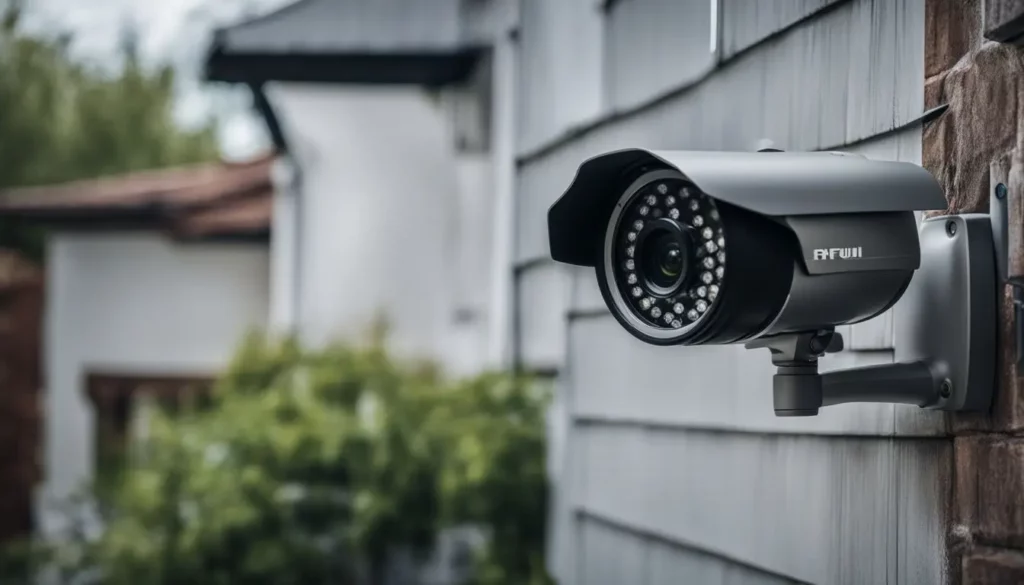
Selecting the right outdoor security camera for your home isn’t just about picking a brand or model—it’s a thoughtful process involving several key elements that will ensure you get the functionality and protection you need.
From assessing video quality to understanding power sources and considering how cameras stand up against Mother Nature, we’ll dive into these crucial factors to guide your decision for steadfast home surveillance.
Video Resolution
Clear images are key when it comes to security cameras. You want to see details like faces or license plates easily. Video resolution matters a lot here. Cameras with higher resolution give you clearer pictures.
Think of it like the difference between an old TV and a fancy new HD one – more pixels mean better image quality.
HD security cameras should be your go-to for outdoor monitoring. They usually start at 1080p and go up from there, all the way to 4K if you need super detail. Just remember, high-resolution videos take up more space on your storage and might need faster internet for live viewing or uploads.
Privacy and Security Considerations
After you’ve checked out cameras with the best video resolution, it’s time to think about keeping your home safe in other ways too. Your outdoor security camera should protect your place and keep your private life private.
Cameras capture a lot of information, so make sure the one you get has strong encryption. This means only you can see what the camera sees.
You also want to decide where to save these videos—on a cloud service or directly on something like a memory card at your house. Cloud storage might be easier but remember it often comes with monthly fees.
If you go for local storage, check that it’s secure and big enough to hold all the clips without running out of space too fast.
For extra precautions, look for cameras that let you control when they record and who can watch live footage or recordings. You need to feel good knowing that your outdoor security camera gives top-notch security without risking your privacy.
Special Features
Outdoor security cameras offer more than just video recording. These advanced gadgets come packed with special features to keep your home safe.
- Motion detection: Cameras with this feature start recording only when they spot movement. This saves storage space and lets you know when something is happening around your house.
- Two-way talk: Speak through your camera and hear responses with this cool function. It’s like having an intercom at your front door.
- Color night vision: No more grainy black-and-white videos at night. Cameras with color night vision give you clear, bright footage even in the dark.
- Spotlight/siren alarms: Some cameras have built-in lights and alarms that go off if unwanted visitors are detected, scaring them away before they can cause trouble.
- Weather resistance: Make sure your camera can handle rain or snow. Look for one that says it’s weatherproof or has a high climate adaptability score.
- Smart home integration: If you use Google Home or other smart devices, find a camera that works well with them for seamless control over your home’s security.
- Facial recognition: Certain high-end models can tell the difference between people you know and strangers, sending alerts accordingly.
- Geofencing: This feature turns the camera on or off based on the location of your smartphone, so it records only when you’re away from home.
- Pan/Tilt/Zoom (PTZ): PTZ cameras let you change what you’re looking at from your phone or computer, giving you full control to scan different areas.
- Easy installation: Some outdoor cams are super easy to set up—no wires needed! They run on batteries and connect wirelessly to your Wi-Fi network.
- Field of view: Choose a camera that captures wide angles so you can see more of what happens outside your door or in your yard.
Local vs. Cloud Storage
Deciding between local and cloud storage for your outdoor security camera is a critical choice that will influence how you access and manage your footage. To aid you in this decision, let’s compare these storage options in a clear and concise table format.
| Feature | Local Storage | Cloud Storage |
| Data Access | Access from the physical device or home network | Access from any device with internet |
| Cost | One-time purchase of storage device; no ongoing fees | Monthly or annual subscription fees |
| Privacy | Controlled by the homeowner; less susceptible to breaches | Dependent on third-party security measures |
| Capacity | Limited by hardware size; expandable with physical upgrades | Often scalable; offers more storage based on plan |
| Data Safety | Subject to physical damage or theft | Protected in secure data centers; risk of cyber attacks |
| Sharing Ability | More steps are required to share footage | Easy sharing options through apps or web interfaces |
Both options present distinct advantages and challenges. It’s essential to weigh these differences against your personal security needs and preferences. Once you’ve settled on the storage that’s right for you, the next factor to consider is the adaptability of your security camera to different weather conditions and environments.
Battery-Powered vs. Wired
Understanding the power source for your outdoor security camera is crucial to ensuring seamless operation and optimal placement around your property. Here’s a comparison between battery-powered and wired cameras to help you determine which might be the best fit for your home security needs.
| Battery-Powered Cameras | Wired Cameras |
| Flexible placement without needing an outlet | Requires access to an electrical outlet |
| Often easier to install with no cords to manage | Installation can be more complex due to wiring |
| Batteries need to be recharged or replaced periodically | Continuous power without the need for battery replacement |
| Potential for interrupted service if batteries die | More reliable power source, but vulnerable to power outages |
| Usually come with a lower upfront cost | May have a higher initial cost due to installation |
| Typically associated with wire-free systems, offering a cleaner look | Can be integrated with existing home security systems |
| Ideal for renters or temporary monitoring solutions | Best for permanent security solutions in owned homes |
| Can be less reliable in extreme weather conditions | Usually designed to handle harsher climates |
| May offer smart features like motion detection and two-way talk | Also offers advanced features, often with better performance due to steady power |
Each camera type brings its own set of advantages to the table. Battery-powered options may be best for those seeking a quick, flexible security setup. Wired cameras, on the other hand, cater to homeowners looking for a more permanent solution with reliable power. In deciding, consider factors such as video resolution, climate adaptability, and whether you prioritize ease of installation or continuous, long-term surveillance when making your selection.
Climate Adaptability
After deciding whether you want a battery-powered or wired outdoor security camera, consider how well the camera can handle your local weather. Outdoor cameras must be tough. They face rain, snow, and extreme temperatures.
When shopping for an outdoor home security camera, look for one that says it’s waterproof and weather-resistant.
Some cameras are made to work in very cold or hot conditions. If you live where it gets really cold, check if the camera has a de-icer function so it doesn’t freeze up. For those in hot places, find cameras built to stand high heat without damage.
Always look at the temperature range a camera can take before making your final choice. This way, you make sure your home is safe no matter what Mother Nature brings.
The Best Outdoor Security Cameras on the Market
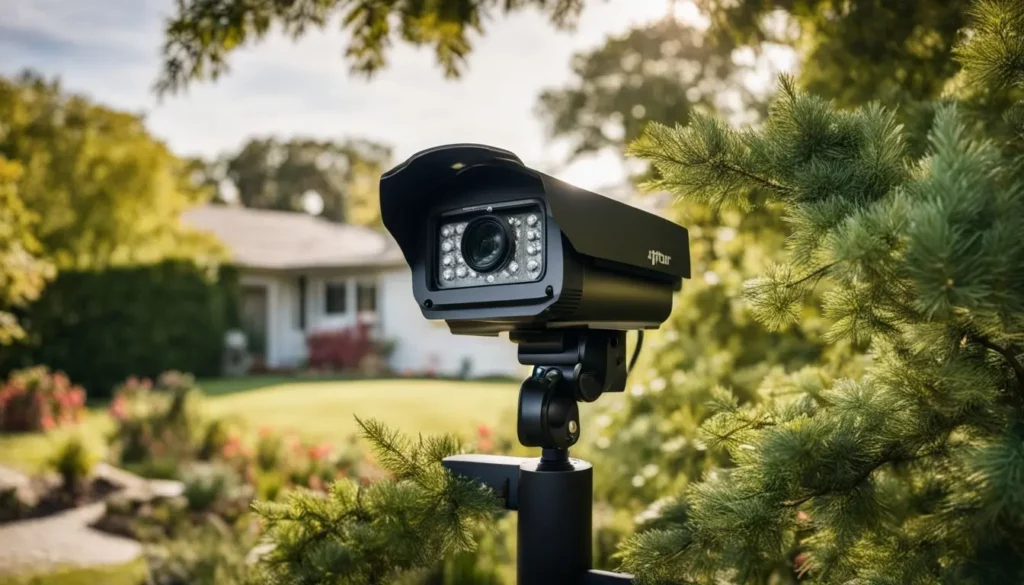
Sifting through the plethora of options, we’ve meticulously selected outdoor security cameras that stand out for their robust performance and feature sets. From models excelling in high-definition video capture to those offering innovative surveillance technology, our curated list represents the pinnacle of current market offerings designed to keep a vigilant eye over your home.
Top Picks
Finding the best outdoor security camera is key to keeping your home safe. With so many options, it’s important to choose one that fits your needs and budget.
- Arlo Pro 4: Topping our list is the Arlo Pro 4. It’s wireless, making installation easy, and connects directly to Wi-Fi. This camera offers sharp video quality with a 2K resolution, giving you clear images day or night.
- Google Nest Cam (Outdoor or Indoor, Battery): Google Nest Cam is versatile as it works both outdoors and indoors. The battery life is impressive and it comes with smart alerts and facial recognition as part of its special features.
- Ring Floodlight Cam Wired Plus: If you’re looking for something that illuminates the area while recording, this one’s for you. The Ring Floodlight Cam includes powerful lights and a loud siren which are great deterrents for intruders.
- Wyze Cam v3: For those on a budget, the Wyze Cam v3 does not disappoint. Although less expensive, it doesn’t skimp on features like color night vision and weather resistance.
- Lorex 4K Nocturnal Smart IP Camera: Do you want ultra-high-definition resolution? Then consider Lorex 4K which captures every detail in 4K resolution. It also stands out with its long-range color night vision feature.
Budget Options
Security cameras don’t have to break the bank. There are great budget-friendly options that offer peace of mind without a hefty price tag. Here’s a list of affordable outdoor security cameras for homeowners:
- Look for Wi-Fi cameras that connect directly to your home network. They tend to be less expensive and still provide clear video.
- Battery-powered security cameras can save money over time. You won’t need a professional to install them, and they’re often easy to set up.
- Consider camera models with built-in motion detection. This feature sends alerts only when there’s activity, saving storage space and costs.
- Night vision is crucial for seeing in the dark. Some budget cameras offer good night vision without the high-end price.
- Check out floodlight cameras that combine lighting and video capture. These dual-purpose devices can be more cost-effective in the long run.
- Don’t overlook smaller brands when camera shopping. They sometimes offer the same features as bigger names but at lower prices.
Driveway Monitoring and Security
Keeping an eye on your driveway is key to home safety. A good outdoor security camera can help you watch over this important area.
- Choose a camera with high video resolution: Clear images will help you see details like faces and license plates. Look for cameras that offer 1080p resolution or higher.
- Pick a camera with a wide field of view: This lets the camera cover more space. Cameras with at least a 120-degree angle are great for driveways.
- Consider night vision capabilities: Night vision helps your camera see when it’s dark. Make sure your choice has infrared or color night vision for clear nighttime footage.
- Motion detection is handy: A camera that records when it senses movement saves power and storage space. You get alerted only when something happens in your driveway.
- Think about the power source: Decide if you want a wired camera or one that runs on batteries. Wired cameras don’t need new batteries, but battery-powered ones can be easier to install.
- Storage options matter: Choose between cloud storage or local storage for saving videos. Cloud storage may have monthly fees, but you can access videos anywhere. Local storage doesn’t have fees, but you might have limited space.
- Check the weatherproof rating: Your driveway camera should handle rain, snow, and heat well. Look for cameras rated for outdoor use in all kinds of weather.
- Get cameras with two-way talk: This feature lets you speak to people on your property from your phone or tablet.
LTE Options
LTE options for outdoor security cameras are a big deal if you want to keep an eye on your home without Wi-Fi. Here’s how they can help:
- Works Without Wi-Fi: LTE cameras use the same signals as your phone, so they don’t need Wi-Fi. They’re great for places where Wi-Fi is weak or not there at all.
- Remote Access: With LTE, you can watch your camera’s video from anywhere. Just use your smartphone or tablet to see what’s happening at home.
- Flexible Placement: Since these cameras use cellular signals, you can put them in many spots. You’re not stuck only where there’s Wi-Fi.
- Reliable Connection: LTE often stays strong even when power lines go down or during bad weather, keeping your cameras online.
- No Wires Needed: Most LTE cameras are battery-powered, so you won’t have to drill holes for wires or plug them into an outlet.
- Consider Data Plans: Remember that LTE cameras need data plans, much like a smartphone does, adding some extra cost each month.
- High-Quality Video: Some LTE security cameras come with high resolution, making sure the videos are clear and crisp.
- Night Vision Capabilities: Many have night vision so that you can see what’s going on outside even when it’s dark out there.
- Motion Alerts: Get instant alerts on your phone if the camera picks up movement in its view, keeping you informed right away.
- Durable Design: They are made tough to handle rain, snow, and heat because they have to work well outdoors all year long.
- Easy Setup: You don’t need a lot of technical know-how to get these up and running; just follow simple instructions.
The Importance of Proper Testing
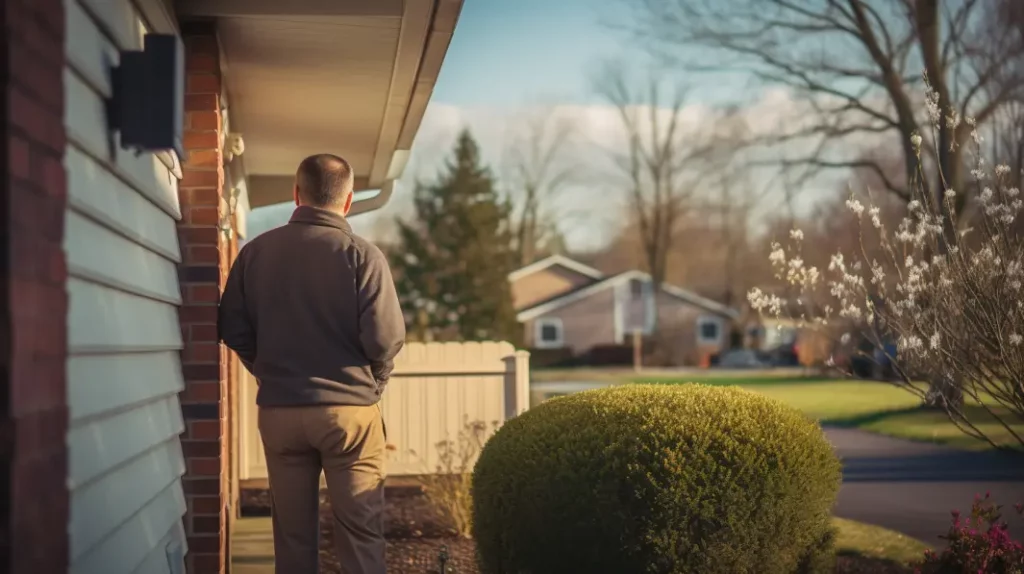
Understanding a security camera’s capabilities and performance is not solely based on what’s written on the box—thorough testing under various conditions reveals its true mettle.
We rigorously examine outdoor security cameras for factors such as image clarity, motion detection accuracy, and resilience to the elements to guide you toward a reliable choice.
How We Test Outdoor Security Cameras
Testing outdoor security cameras is a serious job. Our goal is to give you reliable information on the best home security cameras of 2024.
- First, we check the video quality. We make sure the camera can show clear pictures during the day and at night.
- Next, we see how wide the camera can look. This tells us if it will catch everything happening outside your home.
- We then test how well it works in different weather, like rain or snow, to make sure it’s tough enough.
- Battery life gets tested too if the camera is not wired. We want to know how long it can work without needing a charge.
- If a camera claims to be smart, we try out its special features. These might be motion alerts or being able to talk through the camera.
- Storage options are important as well, so we look at whether videos save on the cloud or locally and how secure they are.
- Lastly, we test how easy it is to set up and use daily because nobody wants a complicated system.
Home Security Camera FAQs

Lots of people have questions about home security cameras. They often wonder how much they can see or if the camera works at night. The good news, most outdoor security cameras have a wide view.
This means they can capture a lot of your yard or street in one picture. Also, many have night vision so you can still see what’s happening even when it’s dark outside.
Another question is about where the videos go after being recorded. Some cameras save videos on the cloud which you can get from anywhere with the internet. Others keep them on local storage like a memory card that you put in the camera itself.
It depends on what works better for you and if you want to pay for cloud storage plans.
Special Features to Consider
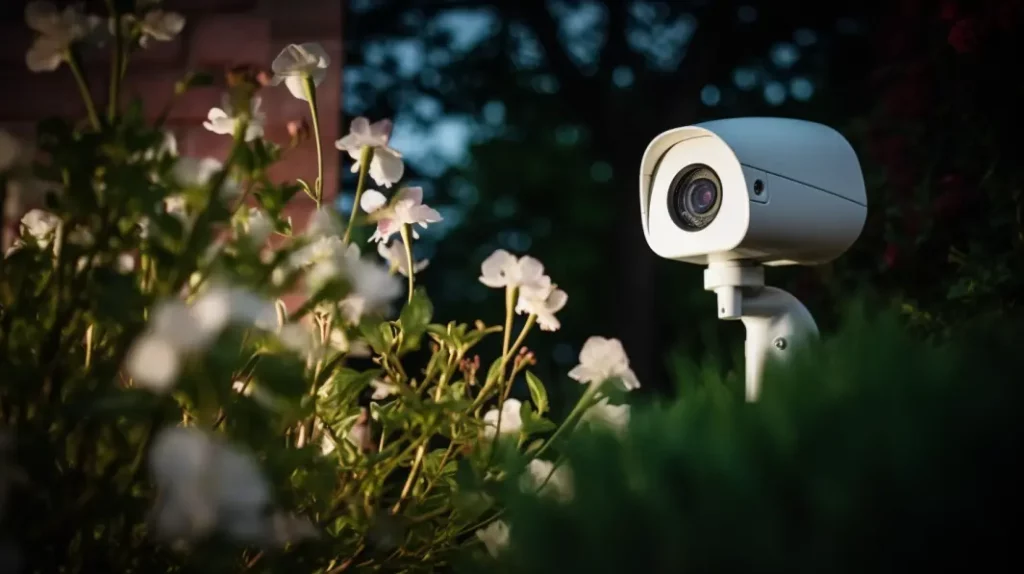
In a realm where security is paramount, discerning homeowners know that the devil is in the details. The right special features on an outdoor security camera can make all the difference—elevating your home surveillance from standard to exceptional, ensuring peace of mind with every pixel captured.
Motion Detection
Motion detection is a key feature of outdoor security cameras. It means the camera starts recording only when it senses movement. This can save power and storage space. You get alerts on your phone too, so you always know what’s happening at home.
Some motion detection cameras are smart. They tell apart a car, person, or animal. That way, they won’t bother you for every little thing that moves outside your house. When picking out a camera, think about how sensitive the motion detector is and if it fits where you live.
Two-Way Talk
Two-way talk is a must-have for any top outdoor security camera. It lets you speak with visitors or warn off unwanted guests from anywhere using your smartphone. Imagine being able to talk to the delivery person and tell them where to safely drop off a package, all while you’re at work! With two-way talk, your home becomes smarter and more interactive.
This cool feature turns your security system into an intercom. If someone’s at your door, you can chat right through the camera—no need to open the door first. Whether it’s an unexpected visitor or just letting the kids know dinner is ready, two-way talk makes communication easy and safe.
Plus, it could scare away a potential thief if they hear your voice but can’t see you!
Color Night Vision
Color night vision changes the game for outdoor security cameras. It lets you see what’s happening outside your home in full color, even when it’s dark. This feature is like having a set of super eyes that work day and night.
The colors help you spot things easily, like the color of someone’s clothes or the make of a car.
Imagine looking at a video that shows clear-as-day images instead of just shadows and shapes. Color night vision can do this, making sure nothing slips past unnoticed. With this tech, your camera becomes much better at guarding your home after sunset.
Now let’s look into another cool feature – spotlights and siren alarms.
Spotlight/Siren Alarms
Spotlight/siren alarms are special features that can make an outdoor security camera even better. If someone comes close to your home, these cameras turn on a bright light or make a loud noise.
This can scare away a person who should not be there and let you know something is happening. It’s like having an extra way to keep your home safe.
These alarms also help the camera see better at night by giving more light. You get clearer pictures if someone tries to sneak around in the dark. Some cameras let you talk through them too, so you could say something to scare off an unwanted visitor from anywhere using your phone! This makes spotlight/siren alarms a smart choice for protecting your house day and night.
How to Choose the Best Security Camera for Your Home
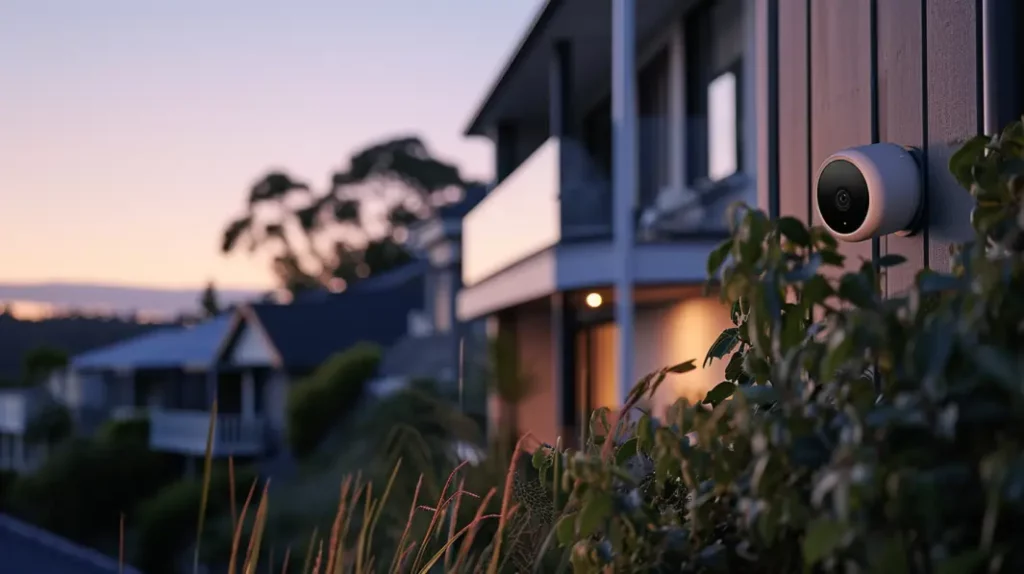
Picking the right security camera for your home is a big deal. You want to feel safe and know that your place is protected. Here’s how to find the best one:
- Think about video resolution. Higher resolution means clearer pictures. Make sure you can see who’s at your door or in your yard.
- Look at the camera’s field of view. A wider angle shows more space around your home. This way, you won’t miss anything important.
- Night vision matters a lot. Your camera needs to see well when it’s dark out, so check if it has good night vision.
- Decide on storage options. Some cameras save videos in the cloud; others keep them on a memory card. Choose what works for you.
- Check if the camera fits with your weather. It should handle sun, rain, and snow without any problems.
- Wired or battery? Think about where you’ll put the camera and if you have an outlet nearby or prefer a wire-free choice.
- Extra features can help. Motion detection and two-way talk might be something you want in a camera.
- The Arlo Pro 4 is super popular for home security in 2024. It’s got many great features that could work for you too.
- Plan where to put indoor cameras carefully. They should not point at private spots inside your house.
- Finally, consider special needs for your home like driveway monitoring or remote access through LTE options.
How to Use Outdoor Security Cameras Effectively
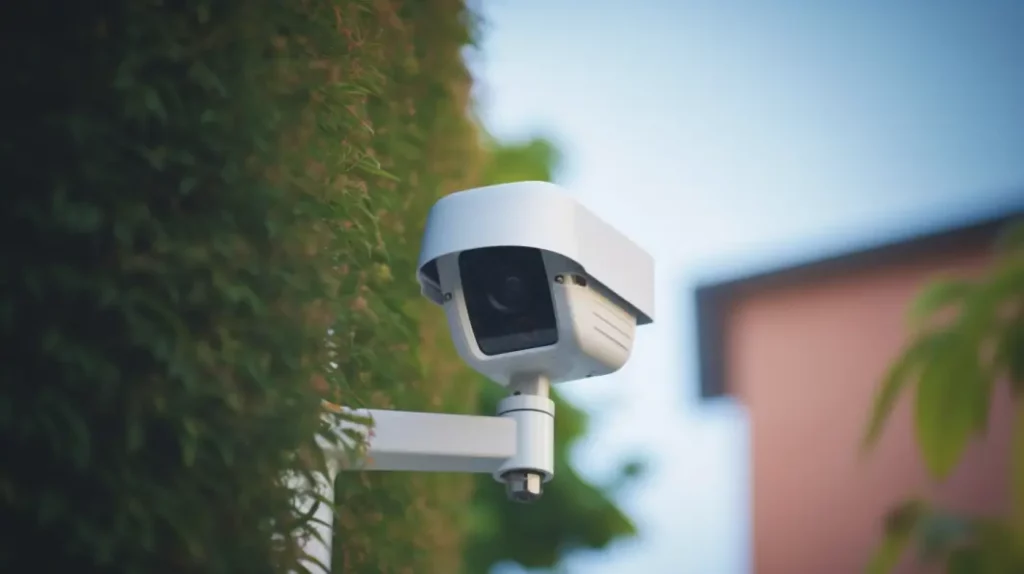
After picking the right security camera for your home, it’s time to make sure you use it in the best way. Here are some tips to help you get the most out of your outdoor security cameras:
- Install Your Cameras at a Good Height: Place cameras above 9 feet so they can’t be easily reached or tampered with.
- Cover Main Entry Points: Make sure cameras watch over doors and windows on the first floor.
- Point Cameras in the Right Direction: Aim them at spots where someone might enter your property.
- Keep Cameras Out of Direct Sunlight: This helps prevent glare and keeps the picture clear.
- Use Motion Detection Features: Set up cameras to record or alert you when they sense movement.
- Check Camera Angles Regularly: Make sure nothing is blocking the view, like growing trees or new buildings.
- Connect Cameras to Your Phone: Use a smart home app to see live footage and get alerts while away.
- Secure Your Internet Connection: Protect your camera feed from hackers with strong passwords and secure Wi-Fi.
Privacy and Security Considerations
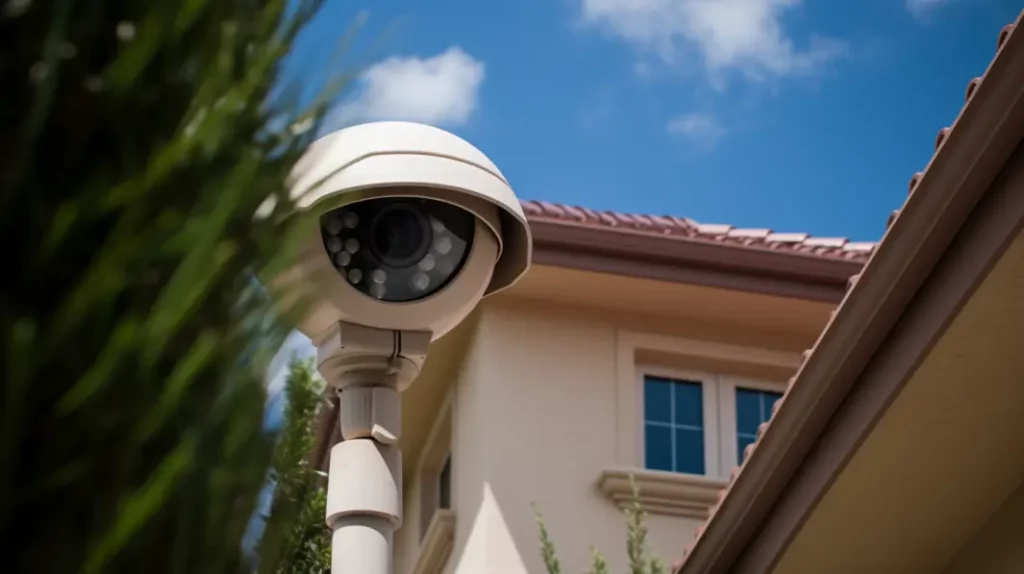
As you set up your outdoor security cameras for effective home monitoring, it’s also crucial to think about privacy and security. You want to make sure only you can see what the camera sees.
This means checking that the camera has good safekeeping features like encryption. Encryption scrambles the video so only people with a special key can watch it, like a password.
You also need to pick where to put your cameras carefully. Make sure they don’t point at places where neighbors or people walking by expect privacy—like their yards or windows. Your security measures should not impinge on another person’s privacy or personal affairs.
Plus, strong passwords and regular software updates keep hackers away from your home surveillance systems. Always stay on top of these things to protect against unwanted eyes watching over your family and property.
Conclusion
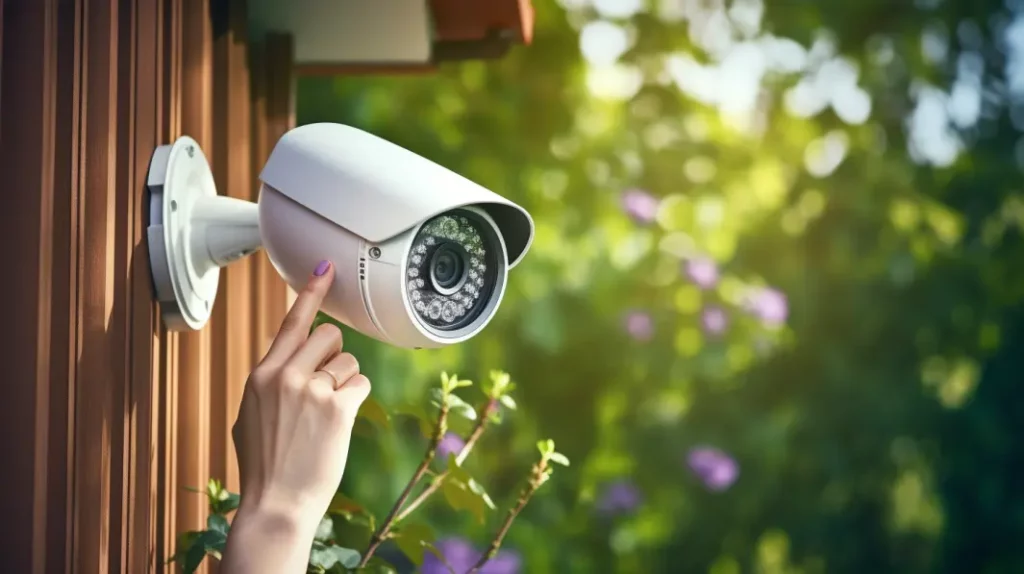
Picking the right outdoor security camera protects your home and gives you peace of mind. It’s worth taking time to choose a camera with clear video, night vision, and good storage options.
The Arlo Pro 4 stands out as one great pick for its quality features. Remember to place cameras well, so they cover important areas without invading privacy. Let these guidelines lead you to a safer, more secure home!
FAQs
What video resolution should I look for in an outdoor security camera?
You’ll want to choose a camera with high video resolution – at least 1080p HD – so that the footage is clear enough to see important details like faces or license plate numbers when reviewing it later. Higher-resolution cameras capture sharper, more detailed images.
How do I make sure my outdoor camera can withstand the weather where I live?
Check each outdoor security camera’s weatherproof rating and operating temperature range. Look for cameras advertised as waterproof or weather-resistant, and ensure they are rated to withstand the climate extremes in your region – both cold winters and hot summers.
Should I choose cloud storage or local storage for my security camera footage?
Cloud storage often has subscription fees but makes accessing your footage easier from anywhere. Local storage saves videos directly on a memory card in the camera but has limited capacity before needing an upgrade. Consider costs, accessibility, capacity, and information security.
What special camera features improve home security monitoring?
Useful special features include high-quality night vision, motion detection alerts to your phone, spotlight alarms to scare off intruders, two-way audio communication, and compatibility with other smart home devices.
How can I protect my family’s privacy with a home security camera?
Be thoughtful about camera placement, avoid aiming it at neighbor’s homes, use video encryption, set recordings to activate only based on motion detection rather than continuous capture, create strong password protections, and regularly update your camera’s security software.
